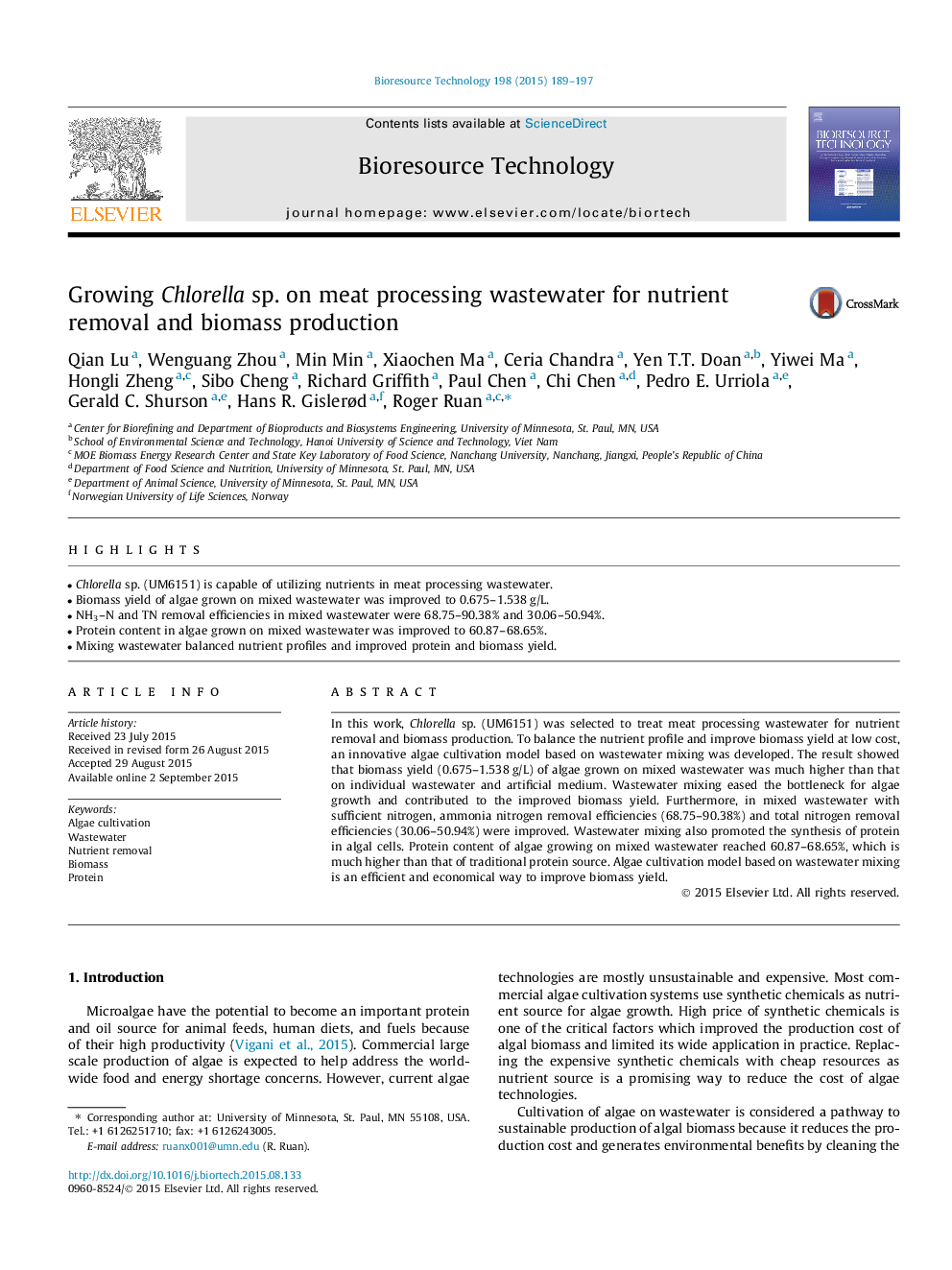| Article ID | Journal | Published Year | Pages | File Type |
|---|---|---|---|---|
| 679461 | Bioresource Technology | 2015 | 9 Pages |
•Chlorella sp. (UM6151) is capable of utilizing nutrients in meat processing wastewater.•Biomass yield of algae grown on mixed wastewater was improved to 0.675–1.538 g/L.•NH3–N and TN removal efficiencies in mixed wastewater were 68.75–90.38% and 30.06–50.94%.•Protein content in algae grown on mixed wastewater was improved to 60.87–68.65%.•Mixing wastewater balanced nutrient profiles and improved protein and biomass yield.
In this work, Chlorella sp. (UM6151) was selected to treat meat processing wastewater for nutrient removal and biomass production. To balance the nutrient profile and improve biomass yield at low cost, an innovative algae cultivation model based on wastewater mixing was developed. The result showed that biomass yield (0.675–1.538 g/L) of algae grown on mixed wastewater was much higher than that on individual wastewater and artificial medium. Wastewater mixing eased the bottleneck for algae growth and contributed to the improved biomass yield. Furthermore, in mixed wastewater with sufficient nitrogen, ammonia nitrogen removal efficiencies (68.75–90.38%) and total nitrogen removal efficiencies (30.06–50.94%) were improved. Wastewater mixing also promoted the synthesis of protein in algal cells. Protein content of algae growing on mixed wastewater reached 60.87–68.65%, which is much higher than that of traditional protein source. Algae cultivation model based on wastewater mixing is an efficient and economical way to improve biomass yield.
